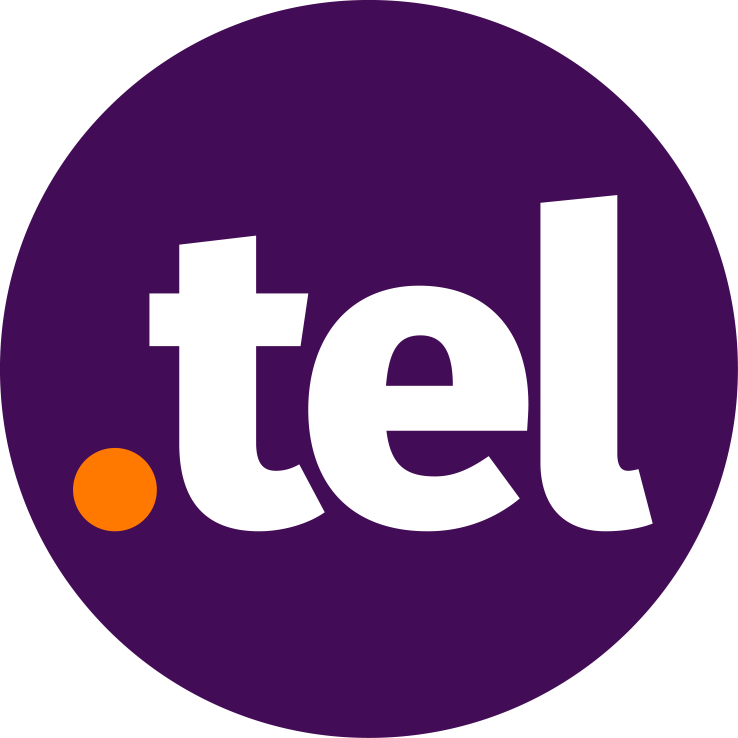Frequently Asked Questions
Find answers to our most frequently asked questions, as well as tips on getting the most from your .tel domain.
General FAQs Buying Renewing Premiums Manage your .tel .tel IDNs
GENERAL FAQs | About .tel
What is .tel?
How do I claim my free Telhosting account?
What can I store in my .tel?
• Publish contact and content records
• Add PDF documents
• Add Promotional product/service offers
• Add Images and Video
• Sell Products and services via a PayPal interface
• Add custom design
• Add an image advert.
What is the role of the .tel Sponsoring Organization?
How can I get involved and submit my views and opinions?
Email us at cservice@telnic.org
Register on our forum and provide your views on there.
BUYING a .tel
How can I buy a .tel domain?
How much does a .tel domain name cost?
For what term can I buy a .tel domain?
What are the .tel domain registration policies?
• Minimum characters of 1 and maximum characters of 63, not including the “.tel” extension
• Every domain must contain at least 1 letters or number form a-z or “A-Z” and 0-9 in standard ASCII script or one IDN character in non-ASCII script
• .tel domain name cannot begin or end with a hyphen
How do I get information on who registered a particular .tel domain?
What are the restrictions for using my .tel?
Can I transfer or sell a .tel domain name?
How do I transfer a .tel domain to a different registrar?
To get started, obtain a unique authinfo code from your current registrar and initiate the transfer through the new registrar of your choice. Please be informed that it is the obligation of your current registrar to provide you the authinfo code; Telnames is not in a position to issue this code for you.
What is the refund policy for .tel domains?
How do I resolve an intellectual property dispute regarding a .tel domain name?
RENEWING your .tel
How do I renew my .tel domain?
Can I renew with a different provider?
I forgot to renew, but my domain is still resolving and in an ||OK|| status. Do I need to do anything?
I forgot to renew and now my domain doesn't resolve - what can I do?
If the domain is no longer listed in the WHOIS it is available for general registration and you can purchase it as a new registration.
The domain I want to buy expired, but I still cannot buy it
If the current owner does not wish to renew the domain, the registrar issues a deletion and changes the WHOIS status to “Pending Delete”. If the owner doesn’t request restoration of the domain within 30 days of this redemption period, the domain is kept in a 5-day deletion period, and then released for re-registration. In summation, a domain name may be released for anyone to register in a period between 35 and 80 days after its expiration.
MANAGING your .tel
How do I claim my free Telhosting account?
How do I edit my .tel?
I've forgotten my password, how can I reset it?
I can’t see my .tel in the control panel
Often accounts contain more than one .tel domain. If you do not see a domain you own in the dropdown list in your control panel, please contact us at cservice@telnic.org
How do I preview a contact?
Once you save your contact, it gets published to the DNS and is instantly available in your .tel. Type in your .tel name in a new browser window to see how others see your page.
My location does not show as my address.
The Location record is a combination of longitude and latitude displayed as a map entry. If you want to publish a postal address, use the address fields in the control panel
Why are some contacts grey?
If you have opted to disable a contact, it will be displayed in grey.
Can I put an MX record for an email address (me@mydomain.tel) in a .tel domain?
Yes, .tel domains support mailboxes. An email package may be offered by your .tel service provider or configured via the Settings tab in your .tel control panel. You cannot host email services on a .tel domain, but you can use a mail hosting provider and add relevant domain settings to the provider’s servers.
How do I access the .tel zone file?
Can I use your logo on a website if I am intending to re-sell .tel domains that I have purchased?
.tel IDNs
What are IDNs?
An example would be Jörn.tel or 李.tel. These names will be seen in software applications such as web browsers. IDN-aware applications translate these names into traditional ASCII-only strings such as, for example, xn--1lq90i.tel. As a result, IDNs are displayed in their internationalized form in the user interface, while internally applications and servers communicate using ASCII-only forms of the same domains.
Every registered IDN must be associated with a specific language. For more information on IDNs, please seehttp://en.wikipedia.org/wiki/Internationalized_domain_name
What languages are supported for IDN.tel domains?
Why is my language not supported in IDNs?
Will further languages be supported in IDNs?
What characters are allowed in IDN.tel domains?
What characters are not allowed in IDN.tel domains?
How can I register an IDN.tel domain?
What restrictions are there on purchasing IDN.tel domains?
Can I purchase a one or two character IDN.tel domain?
Do IDN.tel domains cost more than standard .tel domain names?
Do you take measures against homographic attacks?
What is a ||decorated|| character domain?
If I own domains without ||decorated|| characters that match those with decorated characters, am I eligible to get these domains?
What are the rules for registering an IDN.tel?
How have you decided the rules for registering an IDN.tel?
Since general availability of .tel domains, Telnames has not made decisions on the comparability or otherwise of domain names. With the introduction of Internationalised Domain Names (IDNs), the situation becomes more complex. Within a language, some words have forms with and without “ornamented” characters, and there are a number of different rules to map from one name form to another. Unfortunately, these rules conflict. That means that there is no single deterministic scheme that will work for any word.
Many words have crept into usage in other languages, and those words differ in the way they apply diacriticals, or even whether there are diacriticals in the different language versions. Some languages drop the “ornamentation” for some capital letters. Other languages do use these ornamented capital letters. Thus is may not be clear whether or not two domain requests that have been converted to lower case are the same. Thus transliteration between the “ornamented” and plain versions of a character might need to be considered.
Here are just a few of the rules that might apply:
• should ä be associated with a or ae?
• should ö be associated with o or oe?
• should ü be associated with u or ue?
But then…
• should ae or A or a be associated with ä?
• should oe or O or o be associated with ö?
• should ue or U or u be associated with ü?
As an example, should Noel (a first name, a town in Missouri, a hurricane, a company in Columbia, and a poetical English word for Christmas) be associated with the string Nöl (using German rules), or with Nöel (Christmas in French and other languages)? Conversely, is Nöl associated with Noel, or with Nol? Also, should Nöel be associated with Noeel (again applying German language rules)?
Thus, if noel.tel is registered, should Telnames block an attempt to register nöl.tel? Conversely, if someone registers nöl.tel, will Telnames then have to block a subsequent attempt to register the domain noel.tel? Also, what of the domain name nol.tel – should this also be blocked? Finally, if nol.tel has already been registered, does this mean that nöl and nöel are not available?
Trying to apply these conflicting rules to block registration attempts for “associated” words would raise many questions and the confusion that would bring would not help anyone. Without checking every name in advance against dictionaries for each language, it is not possible to come to single, unambiguous, clear and fair answer. As the result would still be subjective, Telnames continues to treat each domain name as a separate item, and allocates names on a first-come, first-served basis. After much research, Telnames has concluded that this is the most equitable solution for all community members.
Telnames does not make any judgemental on whether or not there is any prior right to a name. That remains a task for WIPO or other approved arbitrators. If an organisation believes that it has right to a domain for which it has not applied or secured, it can use the UDRP, the decisions of which Telnames of course respects.


